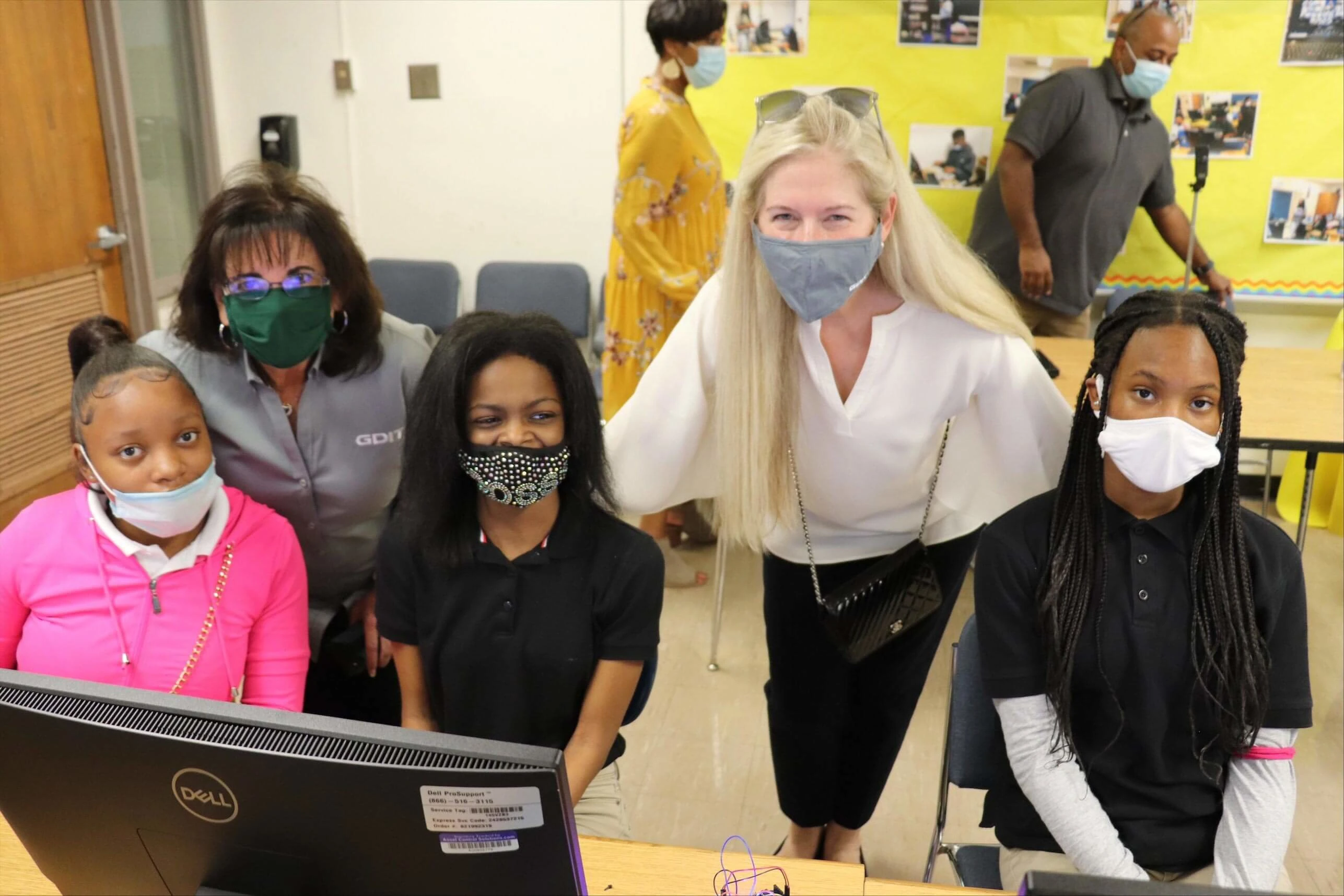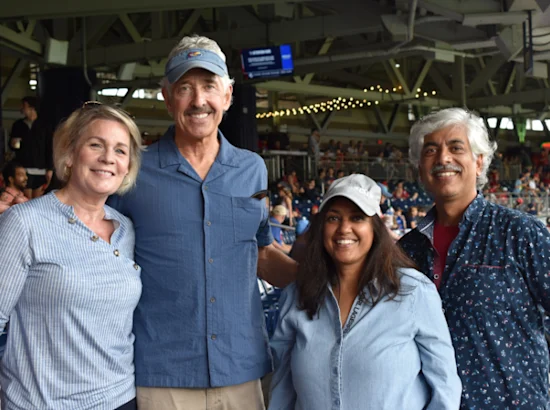In classrooms across the country every day, students are told to turn off and put away their devices. But we know that having great technology in the hands of students is critical to preparing them to join a 21st century workforce built on ones and zeros.
GDIT is partnering with schools in St. Louis, home to the company’s new geospatial innovation center, to bring innovative, hands-on science, technology, engineering, and math learning opportunities, known as STEM, to classrooms. Created in partnership with STEMBoard, the project-based kits help introduce students to basic coding skills with self-paced activities that teach the fundamentals of coding to students in a fun and accessible way.
These fun coding lessons, called LINGO Lessons, help students learn through experience: “In the Driver’s Seat,” teaches students how to build a driverless automobile’s back-up sensor; “Music through Movement,” teaches students to interact with sensors and build instruments that “play” with a wave of a hand; and “Reaction Time,” teaches students how to build a reactive, two-player game that tests speed by combining sports, electronics, and hand-eye coordination.
GDIT and STEMBoard provided the LINGO lessons to support the STEM-capacity building work GDIT was already doing with non-affluent, on-the-rise schools in the St. Louis area. GDIT is also working with STEMBoard to create a geospatial-intelligence-specific “GEO LINGO” lesson for high school students, helping students visualize and map data, which will be in schools during the next academic year.
To ensure the program’s success, GDIT and STEMBoard worked with teachers to develop the curriculum and training. As the pandemic required certain aspects of the program to be conducted virtually, GDIT and STEMBoard leveraged a blended learning model for introducing and walking students through their LINGO lessons while building institutional capacity by helping teachers learn to present these new tools.
During the fall semester, GDIT engineers and other employees visited classrooms to provide experiences that students could connect with. Many of the students had never met an engineer at all, much less one who is also a minority, who looks like them. The resources GDIT and STEMBoard brought into the schools are ones the schools might not otherwise have had access to. Meeting real people who have done the work, can talk about it and want to give back makes it much more real and much easier for the students to see themselves in a STEM career.
“GDIT is increasingly concerned about the widening gap among students who are prepared to join a digital workforce and those who aren’t,” said Deb Davis, vice president mission solutions. “This investment in students, which we look forward to growing, is an investment in the pipeline of future technologists who will work at GDIT’s St. Louis offices and beyond.”
“By providing critical STEM resources to teachers and students, GDIT is directly inspiring the emerging workforce.” STEMBoard founder Aisha Bowe said. “When we bring LINGO to the classroom in St. Louis, we watch students go from ‘I can’t do this,’ to ‘I am doing this,’ to ‘I am immersed in this,’ to ‘I can’t believe people get paid to do this!’ all in the span of a week. It’s really incredible.”
“There’s now a ‘train the trainer’ element to the work that builds institutional capacity in schools,” Aisha continued. “Next year, we can go with GDIT to new schools and reach new students knowing that the teachers we worked with this year are doing the same with their current students.”
The partnership with STEMBoard and with other like-minded organizations in St. Louis is an extension of GDIT’s longstanding commitment to the geospatial community in the region. In 2021, we celebrated our expanded footprint with a new home in the city’s Cortex Innovation Community (CIC), making a significant investment and continuing our commitment to the community.










